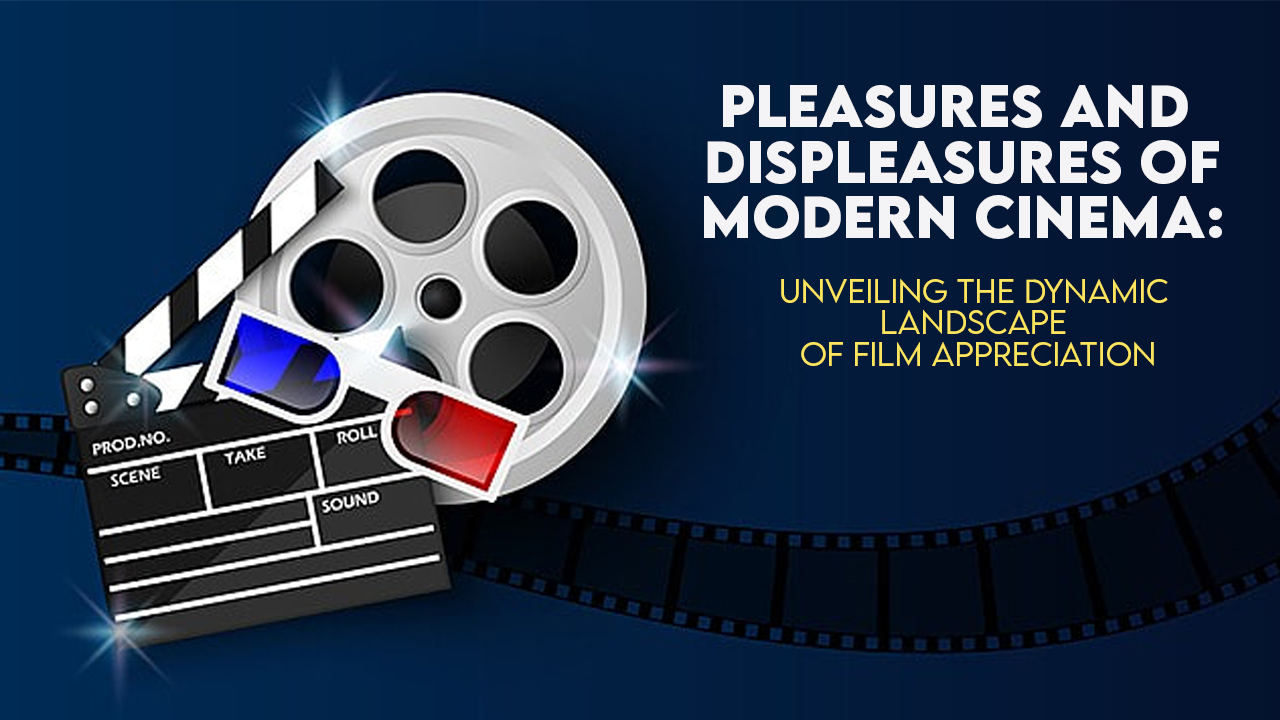Abstract:
As the world of cinema continues to evolve, so do the pleasures and displeasures experienced by its audiences. This academic article delves into the multifaceted nature of contemporary film appreciation, exploring the diverse factors that contribute to the enjoyment and dissatisfaction of modern cinema. By analyzing key examples, ranging from groundbreaking artistic achievements to controversial trends, this article aims to shed light on the ever-changing landscape of cinematic pleasures and displeasures, ultimately providing insight into the complex relationship between filmmakers and their audiences.
1. Introduction:
The advent of modern cinema has revolutionized the way stories are told and experienced, fostering a dynamic relationship between filmmakers and audiences. While the cinematic medium offers a vast array of pleasures, it also exposes viewers to potential displeasures that arise from various factors. This article aims to explore these pleasures and displeasures, unraveling the intricate dynamics within the world of contemporary cinema.
2. Pleasures of Modern Cinema:
2.1 Technological Advancements:
Modern cinema harnesses cutting-edge technologies to create immersive experiences for audiences. Blockbusters such as James Cameron's "Avatar" (2009) and Christopher Nolan's "Dunkirk" (2017) exemplify the visual delights that can captivate viewers, transporting them to mesmerizing fictional worlds. The use of advanced visual effects, high-definition cinematography, and immersive sound design enhances the sensory pleasure of modern cinema.
2.2 Narrative Innovations:
Contemporary filmmakers have pushed the boundaries of storytelling, providing audiences with fresh and thought-provoking narratives. Films like Denis Villeneuve's "Arrival" (2016) and Jordan Peele's "Get Out" (2017) challenge traditional storytelling conventions, engaging viewers through intricate plot structures, unexpected twists, and social commentary. These narrative innovations foster intellectual stimulation and the pleasure of deciphering complex narratives.
2.3 Diverse Representation:
In recent years, cinema has made strides in representing diverse voices and perspectives. Films such as Ryan Coogler's "Black Panther" (2018) and Bong Joon-ho's "Parasite" (2019) showcase underrepresented cultures and shed light on important social issues. The pleasure derived from witnessing diverse stories and characters on-screen fosters inclusivity and encourages empathy among audiences.
3. Displeasures of Modern Cinema:
3.1 Franchise Fatigue:
The dominance of franchise filmmaking has led to a saturation of sequels, reboots, and spin-offs, resulting in a sense of fatigue among audiences. For instance, the seemingly endless stream of superhero films can lead to a lack of originality and a dilution of storytelling quality. Viewers may experience displeasure when confronted with formulaic narratives and repetitive tropes.
3.2 Lack of Diversity Behind the Camera:
While progress has been made in on-screen representation, the lack of diversity behind the camera remains a concerning issue. The underrepresentation of women and marginalized groups in filmmaking positions limits the range of perspectives and stories presented. This imbalance can lead to a sense of displeasure among audiences seeking more inclusive and authentic storytelling.
3.3 Overreliance on Spectacle:
Modern cinema's emphasis on visual spectacle can sometimes overshadow other crucial aspects, such as character development and thematic depth. Films that prioritize dazzling action sequences and CGI spectacles at the expense of compelling narratives and well-rounded characters may leave audiences feeling unfulfilled. For example, Michael Bay's "Transformers" series (2007-2017) often prioritizes explosive visuals over coherent storytelling, resulting in a lack of emotional engagement and leaving viewers dissatisfied.
4. Conclusion:
Modern cinema offers a complex tapestry of pleasures and displeasures, reflecting the evolving tastes and expectations of audiences. Technological advancements, narrative innovations, and diverse representation contribute to the joys of contemporary film appreciation, providing immersive experiences and thought-provoking stories. However, franchise fatigue, lack of diversity behind the camera, and overreliance on spectacle can generate displeasure among viewers seeking originality, inclusivity, and meaningful storytelling.
Understanding the pleasures and displeasures of modern cinema is crucial for filmmakers, critics, and audiences alike. By examining these dynamics, we can foster a more inclusive and engaging cinematic landscape that caters to diverse tastes and enriches the art form. As the world of cinema continues to evolve, it is essential to navigate the delicate balance between commercial viability and artistic integrity, ensuring that the pleasures of modern cinema outweigh its displeasures.
In conclusion, the pleasures and displeasures of modern cinema are intricately interconnected, shaped by a multitude of factors ranging from technological advancements to sociocultural influences. By acknowledging and critically evaluating these elements, filmmakers and audiences can actively contribute to the growth and evolution of the cinematic medium, fostering a more enriching and satisfying film-watching experience.
Note: The examples provided in this article are representative and not exhaustive, as the landscape of modern cinema is constantly evolving, and new films and trends emerge over time.

vBHleVACbrIUywXz
vBHleVACbrIUywXz
KonWzZUsXt